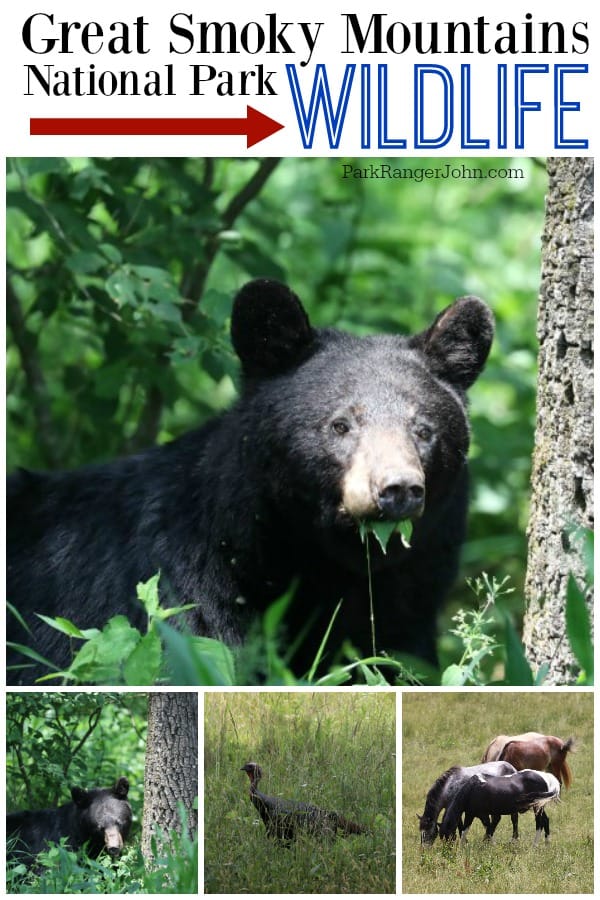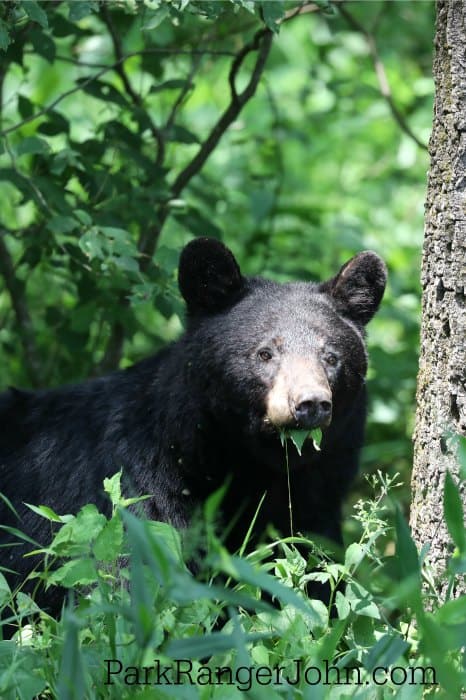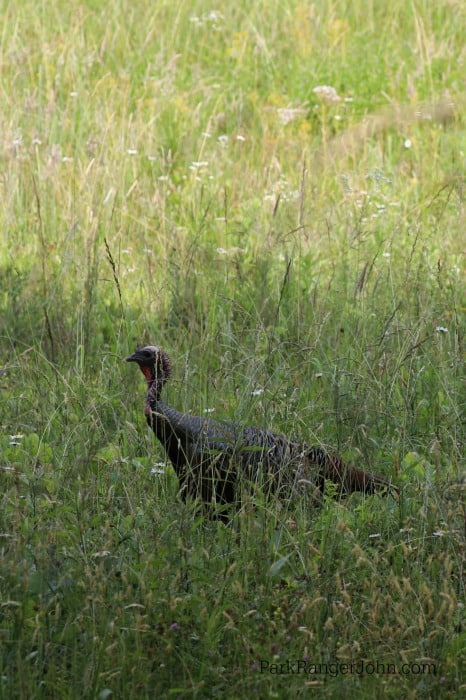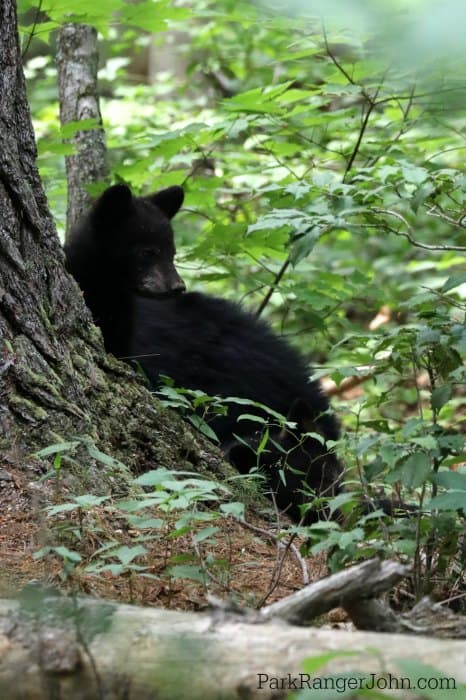The Great Smoky Mountains National Park is home to over 66 mammals, 240 species of birds, 80 reptiles and amphibians and 50 native fish within a half a million acres. There is a great opportunity to see the Great Smoky Mountains National Park Wildlife during a visit to the park.
There are 1,660 wild flowering plants and 1,600 bears in the Great Smoky Mountains National Park. There are also Deer and Elk. and many other animals and species.

Great Smoky Mountains National Park Wildlife
Wildlife photographers and nature lovers converge in the park to catch a fleeting glimpse of one of the 1,500 black bears that call the park home.

The Great Smoky Mountains National Park is located within the Appalachian Mountain Range along the east coast of the United States and Canada. The Great Smoky Mountains National Park consists of 814 square miles in the states of Tennessee and North Carolina.
Viewing wildlife in the park is a challenge at best. Because of the dense forest surrounding the mountains, many of the animals that live in the park, also hide in the park.
[mv_video aspectRatio="true" doNotAutoplayNorOptimizePlacement="false" doNotOptimizePlacement="false" jsonLd="true" key="wffyuuvseclrnwpwikf0" sticky="false" thumbnail="https://mediavine-res.cloudinary.com/video/upload/wffyuuvseclrnwpwikf0.jpg" title="Black Bear in Cades Cove, Great Smoky Mountain National Park" volume="70"]The best viewing is found at Cades Cove, a valley that was formerly home to the Cherokee Indians' favorite hunting grounds. While the Cherokee never inhabited the valley, the European settlers did. This valley now is home to one of the largest varieties of historical buildings in the East.
One can find the likes of the white-tailed deer, black bear, raccoons, turkeys, and many of the other residents of the Smoky Mountains enjoying a meadow morning in Cades Cove.
The best viewing of all wildlife is in the early morning or the early evening hours. This is the most active time for wildlife and it is best to sit and wait on them. Quiet patience usually pays off.
Northern species that normally are not found as far south as the Smoky Mountain range can be found here because of the climate that is available to them in the upper altitudes of the mountains. The cool and moist air of the upper elevations provides a home to the northern flying squirrel, the red squirrel, and the rock vole.
The same climate that is suitable for the squirrels is also a southernmost breeding point for the Common Raven, Canada Warbler, and the Saw-whet Owl.

Prior to the establishment of the Great Smoky Mountains National Park in 1934, many of the native animals had been hunted out of existence. The National Park System has been instrumental in providing sanctuary for endangered animals, fish, insects, and plants, throughout the United States.
Some of the re-introduced animals to the Great Smoky Mountains National Park have been the river otter, elk, and peregrine falcon.
Additionally, some of the endangered species that currently reside in the park include red-cockaded woodpecker, Indiana bat, spruce-fir moss spider, and the smoky madtom. The park has been working diligently to keep these from going extinct as well.
Wildlife is not mammal exclusive; the 240 species of birds in the park create a birdwatcher’s nirvana. From the top of the highest peaks of spruce-fir, where the black-capped chickadee can be found nesting, to the open fields where the red-tailed hawk and the wild turkey are found, one can find a feathered feast for the eyes.
The Great Smoky Mountains Park has the nickname “Salamander Capital of the World”. It is said that the climate and the geological factors have combined to create a climate that has allowed for certain salamander species to diversify so much, that this is the only place that they are all located.
Fish can be included as well.
Over 50 native fish species can be found in the 700 miles of streams located in the park. The park has been able to re-introduce four endangered species into the waterways.
They now have the Smoky madtom, duskytail darter, yellowfin madtom, and the spotfin chub.
Sadly, local extinction has claimed the grey wolf, the red wolf, and the eastern cougar. In addition, they all find themselves on the endangered species list at a national level.
The wildlife abounds in this protected area and whether you are an amateur birder or professional photographer, the Great Smoky Mountains National Park is rich in opportunities to view wildlife in its natural habitat.

Here are some great wildlife guides to take with you to the park!

Leave a Reply